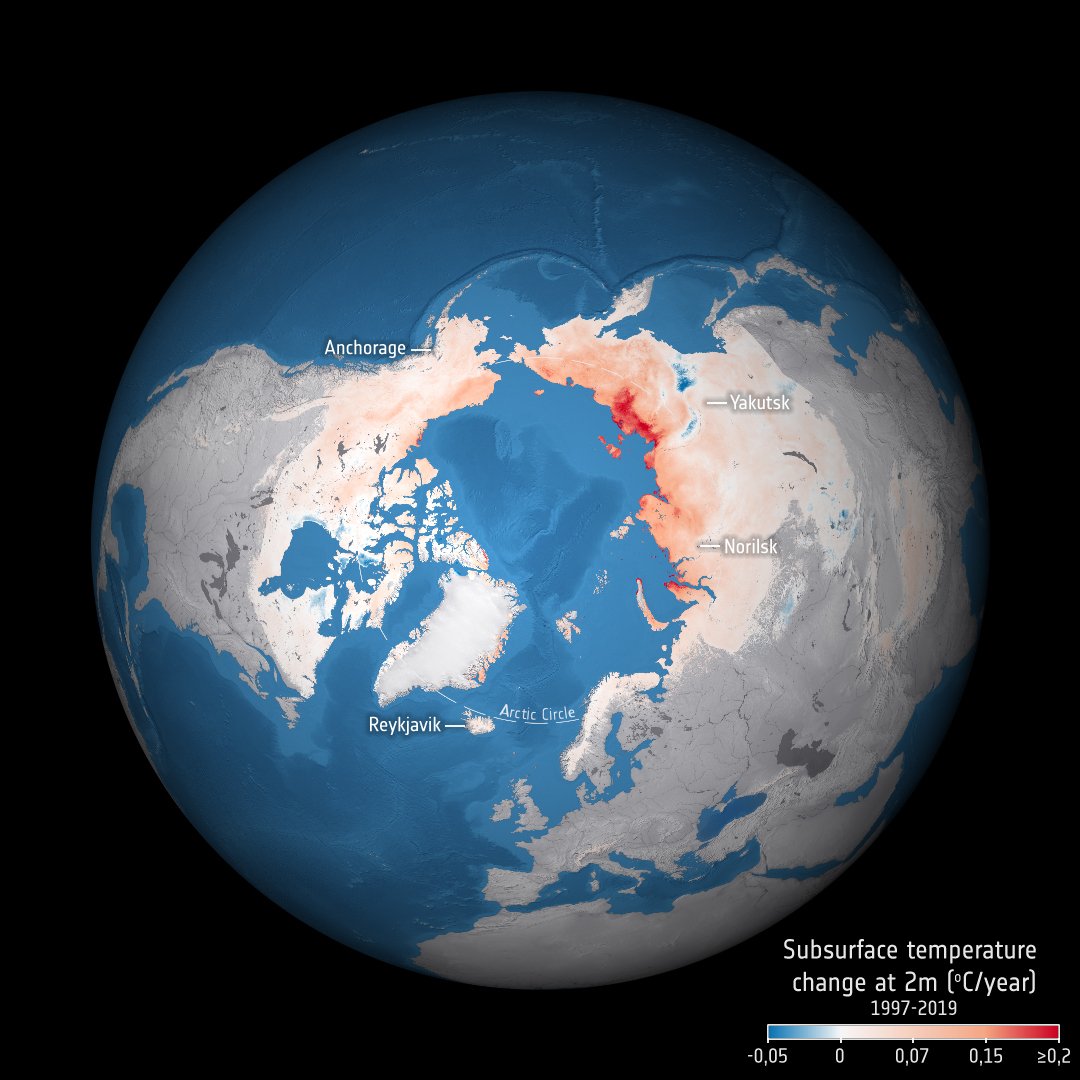19 avril 2023
Permafrost Monitoring from Space – a review
Understanding the implications of thawing permafrost is expected to advance with enhanced data availability and products
Permafrost is a sub-ground phenomenon that cannot be directly observed from space, yet satellite observations have a major potential to support local, regional and circumpolar monitoring of what this key aspect of the climate system.
A new overview article led by Annett Bartsch, ESA CCI permafrost project science leader, and published in the journal Surveys in Geophysics, reviews the types of satellite data and methods which contribute to the assessment of sub-ground conditions, specifically the key parameters, and monitoring of environmental impact of thaw; the methods for processing and interpreting remote sensing data for permafrost monitoring; and current challenges and limitations.

Although indirect, land surface temperature, snow- and land-cover observations from space, multi-annual time series of permafrost ground temperatures can be derived through modelling of the heat transfer between atmosphere and ground. For example, data for long-term, satellite records for northern hemisphere permafrost extent, active layer thickness and ground temperature have been developed ESA’s Climate Change Initiative to address the permafrost Essential Climate Variable defined by GCOS, along with a suite of 26 other CDRs.
Using this approach results show that the northern hemisphere permafrost ground temperatures have increased on average by about one degree Celsius since 2000.

Permafrost proxy monitoring
A number of other related changes can be observed from space that are in line with, and indicate, widespread permafrost thaw across the Arctic and mountain regions. These changes can be considered a proxy for monitoring permafrost change and include:
- surface water extent has been decreasing across the Arctic
- continuous land surface subsidence in some regions indicating ground ice melt
- hot summers triggered increased subsidence as well as thaw slumps
- accelerating rock glaciers in some mountain regions.
To date use of these proxies has only been demonstrated mostly on a local to regional scale, according to the authors, who cite a lack of consistency of acquisitions and of very high spatial resolution observations. Technical advance on both fronts is considered necessary for implementation of circumpolar monitoring of lowland permafrost.
The authors also discuss the crucial role of continuous Earth observations play in facilitating early warning of tipping elements in the climate system. They also highlight that to quantify the impacts of permafrost thaw on the carbon cycle, advancement in wetland and atmospheric greenhouse gas concentration monitoring from space is needed, and is the focus of a transtlantic initiative between ESA-NASA called Arctic Methane and Permafrost Challenge (AMPAC). AMPAC aims to address low confidence in estimates relative to the timing, magnitude and relative role of CO2 versus CH4 according to the sixth assessment report of IPCC (2021).
Reference

